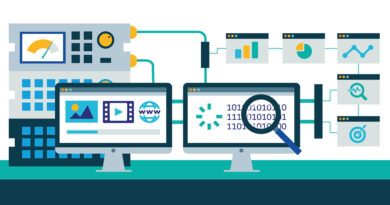How to Master Business Email Management
The volume of emails in call centers or offices never dries up, and if you don’t manage it well, your customers may switch to your competitors.
Many companies have become so active in transitioning their customers to reliable and potentially cost-effective self-service channels (such as interactive web pages and voice-recognition-enabled autoresponders) that the task of managing email processing has faded into the background. And some have stopped doing it altogether. Numerous studies show that most companies’ email response time is long (and sometimes no response is given at all) and so is the quality. This negatively affects the degree of customer satisfaction and their loyalty; as a result, they begin to think about whether to use their services in the future.
How does Poor Email Management Affect a Business?
It Can Affect Brand or Business Reputation:
Poor email handling often affects more than just those directly contacting the call center: in an era of lightning-fast electronic communications and diverse forums, outraged customers share their negative experiences with the world, even for the sake of mere sport. Since e-mail messages are logged, it is very easy for customers to paint service flaws in what is called “in all its glory.” This, of course, can lead to public relations problems, permanent damage to the reputation, and the refusal of a large number of customers to do business with this company.
The leaders of the most successful call centers understand that e-mail requires different skills than phone calls. Therefore, for the recruitment and training of personnel, they create special programs so that their staff is always staffed with qualified operators.
The Art of Effectively Managing Emails
Just as it does with customer service over the phone, advanced call centers have learned to accurately predict email volumes and plan ahead for the number of agents needed to process email to meet the center’s response time requirements. The process of handling incoming e-mail is very similar to the process of processing incoming telephone calls: first, the volume of e-mail is tracked and estimated over time, while staff learns to predict it half an hour ahead. Then, based on the average processing time of one message, the required number of operators is determined. After that, the staff of the latter is completed and a schedule of their work is drawn up.
Optimize Your Email Managing Software for Your Customers
Email managing applications are loaded with tons of artificially intelligent features, such as Automated Chat Bot, a Knowledge Base with “ready-made” answers to the commonly asked questions. To prevent the customer from getting the impression that he is dealing with a machine and not a person, you can slightly edit such messages before sending them.
You can create the best responses to the most common queries to create a continuously updated “Frequently Asked Questions” section, which is posted on the center’s website so that customers do not have to contact operators with routine questions. Of course, the EMS knowledge base is not created by itself. Although most knowledge base software is “self-learning” to some extent, you need to analyze customers’ queries yourself, prepare comprehensive answers and place them in the knowledge base. This process must be continuous so that the knowledge base is updated and improved along with the development of the center itself.
Modern email management applications enable call centers to create interactive e-mail forms on websites that guide a customer who wishes to send a message through a set of steps. This software also helps in maintaining clarity, conciseness, and a predefined format of emails so that it becomes easier for operators to understand and respond to them. One such good email management software is Microsoft Outlook. It provides easy and effective email management features, but users may face technical errors on Outlook, such as error [pii_email_556bd796439757dd3b82] on Outlook. However, it can be resolved pretty easily with the help of MS Customer Support.
Finally, modern EMS applications have a reporting function. With robust logging subsystems, you can thoroughly analyze agent productivity, and identify trends, and potential issues before they impact customer service.
Quality Control is the Top Priority
As noted above, customers under the impression of poor online service can easily ruin a company’s reputation. If you ignore or mishandle emails from customers, you run the risk of tarnishing your call center’s image with “virtual filth.” To avoid such disasters, carefully and continuously manage your email processing and monitor the quality of your agents’ responses to email messages at all times. Many companies have invested heavily in tools specifically designed for this kind of control.
People also searched for error [pii_email_d66aec8ab3772e6af11b]




